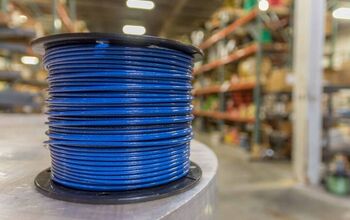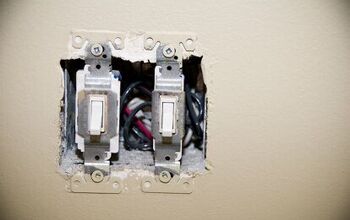Does THHN Wire Have To Be In Conduit?

Electrical wiring is not a pursuit usually undertaken by homeowner do-it-yourselfers. However, some people undertake minor electrical repairs and additions to the electrical systems in the homes. One of the most perplexing portions of proper electrical wiring installation is understanding when wiring is required to be enclosed in conduit. Many people wonder if THHN wire must be in conduit to be installed properly.
THNN, thermoplastic high-heat nylon, refers to the characteristics and materials used to insulate the wires. According to the National Electrical Code (NEC) Art 300, Individual conductors must be installed in a raceway, cable, or enclosure. Most local building codes are based on the NEC. Consequently, THHN wire must be installed in conduit to meet the electrical codes.
It is unusual for THHN wire to be installed in a residential electrical installation. The additional cost and labor required to install conduits make Romex electrical wire for residential installations much more common. THHN wire can be used anywhere Romex cable is installed, providing the THHN is protected by conduit and the appropriate housings and fittings.
Do You Need Electricial Wiring or Panel Upgrade Services?
Get free, zero-commitment quotes from pro contractors near you.

What is THHN Wire?
THHN stands for thermoplastic High Heat resistant Nylon coated. This refers to the characteristics of the insulation material that protects the wire. Under most circumstances, THHN wire is rated for applications up to 600 volts and in environments where the temperature doesn’t exceed 194 degrees Fahrenheit. THHN wire is not rated for wet locations.
In general, THHN sire is suitable for use in all commercial and residential AC wiring applications where it meets the voltage and temperature ratings. According to the National Electrical Code, THHN wire used in an AC electrical system must be installed in conduit. Most local building codes follow the NEC code.
What Types of Conduit Can I Use with THHN Wire?
THHN wire is suitable for use with all seven electrical conduits in residential and commercial electrical AC system installations. The Nylon and PVC insulation of stranded THHN wire makes it an excellent choice for pulling through conduit.
You should remember that Some types of conduits are not suitable for outdoor or underground installations Matching the type of conduit to your installation is critical. Your local building code is the best resource for determining what type of conduit material is appropriate for your installation.
How Many THHN Wires Can I Run Through a Conduit?
Two factors typically determine how many individual THHN wires can be run through a given conduit. The gauge of the wire being pulled through the conduit is one factor. The internal diameter of the conduit is the other factor. The NEC sets standards for the number of wires that can be pulled through conduits.
The table below describes how many THHN wires of a given gauge can be pulled through the most popular conduit sizes used in the United States.
| Conduit Size and Type | 14 AWG | 12 AWG | 10AWG | 8 AWG | 6 AWG |
| ½ inch EMT | 12 | 9 | 5 | 3 | 2 |
| ½ inch IMC | 14 | 10 | 6 | 3 | 2 |
| ½ Inch GRC | 13 | 9 | 6 | 3 | 2 |
| ¾ inch EMT | 24 | 17 | 11 | 6 | 4 |
| ¾ inch IMC | 24 | 17 | 11 | 6 | 4 |
| ¾ inch GRC | 22 | 16 | 10 | 6 | 4 |
| 1 inch EMT | 35 | 26 | 16 | 9 | 7 |
| 1 inch IMC | 39 | 29 | 18 | 10 | 7 |
| 1inch GRC | 36 | 26 | 17 | 9 | 7 |
Can THHN Wire be Used in Underground Conduits?
THHN can be used underground provided it is run through the appropriate conduit. Not every type of conduit is rated for underground use. If THHN wire is used, it must be run through a watertight conduit. THWN, a form of THHN wire, is rated for use in wet areas and is typically used in applications where water is or may be present.
You cannot directly bury THHN or THWN underground. The insulation is not rated or approved for direct burial in the soil. PVC electrical conduit is the usual type of conduit for underground electrical installations. Some metal conduits can be used underground but require watertight connections
Why Doesn’t Romex Need to be In Conduit Like THHN?
Romex is a brand name of electrical wire commonly used for residential house wiring. Romex is a bundled wire with non-metallic sheathing. The National Electric Code considers the sheathing on Romex cable to serve as the conduit or race for the electrical wires in the bundle.
The sheathing on Romex must be non-conducting, flame-resistant, and moisture resistant. This satisfies the NEX requirements for protecting the electrical wiring. The NEC also stipulates where Romex may be used and how the Romex should be attached, supported, and fixed to junction boxes.
Some jurisdictions do not permit the use of Romex in residential installations. Armored cable is the usual type of wiring used in residential installations in these jurisdictions.
ROMEX vs. THHN Wire
THHN and Romex wire can be used for the same applications in many instances. Ease type of wire has its own advantages and disadvantages. Understanding these pros and cons is critical to making the best decision for your wiring job.
Romex Wire Advantages and Disadvantages.
Romex is widely used in residential branch system wiring in the United States. Its many advantages make Romex a cost-effective and economical method of electrical wiring. Among the chief advantages of Romex include the following.
The Advantages of Romex
- Romex comes in a wide variety of sizes and bundle combinations. Standard sizes range from 14 to 2 AWG with one to three conductors in the bundle.
- Romex NM-B is NEC compliant for residential applications for all branch wiring services. The PVC sheaths are flexible, making installation easy. ROMEX is suitable for interior walls, garages, and above-ground surfaces.
- Romex is color-coded for easy identification. The color of the PVC sheath quickly and easily identifies the size of the cable.
- Installation is easy and quick and can be run directly through walls, attics, and basements without conduit.
However, Romex is not without some downsides. Some installations may not be suitable for Romex
The Disadvantages of Romex
- Romex is not rated for use outside. When exposed to direct sunlight and weather, the PVC sheathing can quickly deteriorate, crack, and fail. Most building codes in the US do not allow Romex to be installed outside with some form of additional protection such as conduit.
- If you must run Romex in conduit, the conduit must be sized appropriately. Trying to pull Romex through a too-small conduit can stretch and damage the PVC sheathing.
- Romex can be easily damaged or pinched when making exits and entry points in the home. The home’s entry points and exit points must be fitted with an appropriate connector or bushing to protect the PVC sheathing.
- Romex running through studs in interior walls is easily damaged by nails or screws. Care should be taken to ensure that fasteners are not used in the vicinity of the Romex wire run.
Romex is widely used in residential home construction and provides an economical and safe way to run branch wiring in your home.
THHN Wire Advantages and Disadvantages
THHN is widely used in commercial electrical installations for many reasons. However, it is not the answer to every wiring situation. These advantages and disadvantages of THHN wire must be considered in your planning.
The Advantages of THHN
- The PVC and vinyl insulation on THHN wire make it easy to pull through the conduit. In applications where conduit runs are required to meet building codes, the ability to pull large cable bundles through the installed conduit is essential.
- THHN wiring is almost universally acceptable by building codes across the United States. This makes planning your project much easier in some cases.
- THHN is suited for use in areas with high temperatures. In most cases, THHN can be used where temperatures remain below 90 degrees Celsius.
THHN wire is the mainstay of most electrical wiring installations. Romex is popular for home wiring where it is allowed in the building and electrical codes.
The Disadvantages of THHN
- The major disadvantage to THNN wiring is the requirement in the NEC to run THHN wiring in an appropriate conduit or cable tray. Installing the conduit adds to the expense of the installation. Special skills and tools are required to properly install conduit, which adds additional cost.
Almost every building code in the United States requires that electrical circuits in a commercial building be run in conduit. THHN wire is the choice of most electricians when the wire must be enclosed in an electrical conduit.
Is THHN Wire the Same as THWN?
THWN wire is the same as THHN. However, THWN is rated as water-resistant. THWN is approved by the NEC for use in wet areas in underground applications that may not be watertight.
Most single-strand THHN wire now sold in the United States is dual rated as THHN and THWN. If your wire is labeled with THHN and THWN, the wire can be used in applications where moisture can otherwise be a problem.
Do You Need Electricial Wiring or Panel Upgrade Services?
Get free, zero-commitment quotes from pro contractors near you.

THHN Wire and Conduit Applications
The National Electrical Code is explicit in its requirements for THHN. In all applications where AC electrical service is provided with THHN wire. The wire must be inside a properly installed race (conduit) or cable tray. Running THHN wire openly or unprotected is not only unsafe but will not meet the electrical codes.

Dennis is a retired firefighter with an extensive background in construction, home improvement, and remodeling. He worked in the trades part-time while serving as an active firefighter. On his retirement, he started a remodeling and home repair business, which he ran for several years.
More by Dennis Howard



























